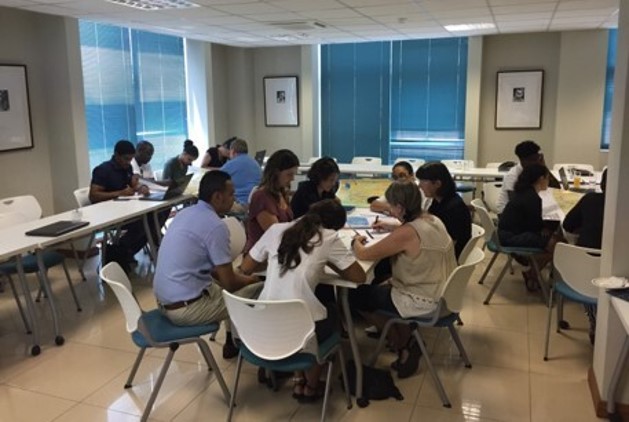Training on wildlife disease surveillance tools
Key stakeholders (including government personnel from public health, veterinary and biodiversity services; wildlife rescue centers staff; field veterinarians; biologists; laboratory technicians; and inhabitants of indigenous communities), were trained to survey for zoonotic disease spillover risk using the USAID PREDICT surveillance protocols. Training covered diverse topics including biosafety and PPE use, animal capture, sampling methods for various species of animals, data collection, sample packing and shipment, emergency preparedness, early warning systems, and safe laboratory operations. Woven into all training on surveillance tools was the emphasis on clear communication channels. All stakeholders were made aware of the specific agencies and individuals to liaise with regarding wildlife disease risk, so that the appropriate parties can be notified in a timely and effective manner.
In Bolivia, English is little spoken by public servers and community members, thus, having local trainers providing training in Spanish was fundamental to facilitate the learning process. Applying a One Health lens to the training broadened the surveillance system to include stakeholders that had not been a part of the process previously. This more inclusive approach from the early point of training resulted in an effective disease surveillance system.
In countries where education and actualization possibilities are limited, especially on novel topics such as wildlife health and surveillance, providing training possibilities to different stakeholders was a good strategy to generate local human capacities and awareness, while engaging people from different sectors and geographic areas to help on wildlife diseases surveillance. Following these trainings, the appropriate stakeholders were empowered with an understanding of what to do when wildlife is experiencing a disease event, who should take samples, the safety methods to implement, and the proper channels of communication. By implementing multi-disciplinary, inter-sectorial and inter-institutional trainings, dialogue, good communication and long-term collaborations among the diverse project´s partners from different sectors were facilitated, while the inclusion of the public health sector enabled the quick and efficient response to prevent a spillover event during the yellow fever epizooty detected on howler monkeys.
